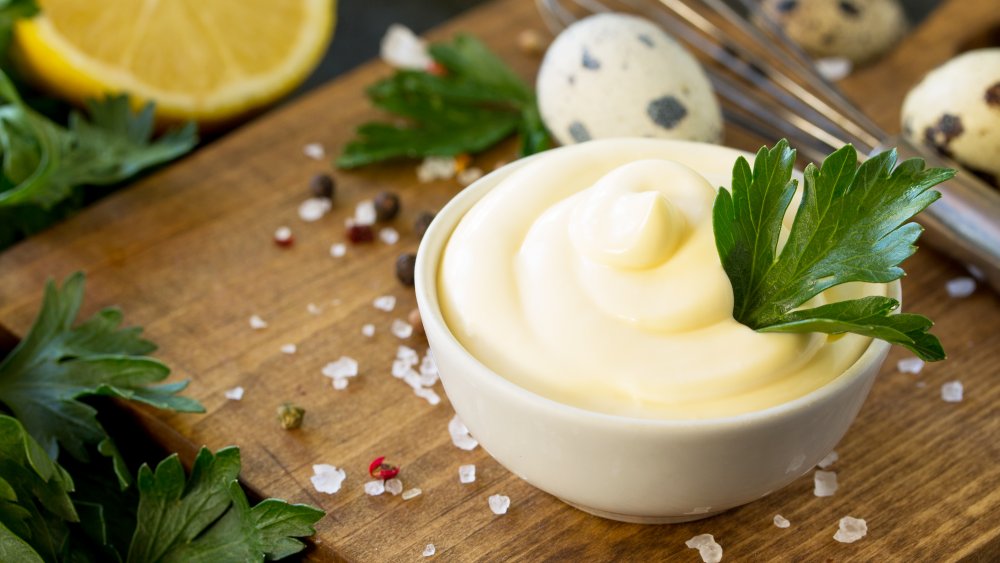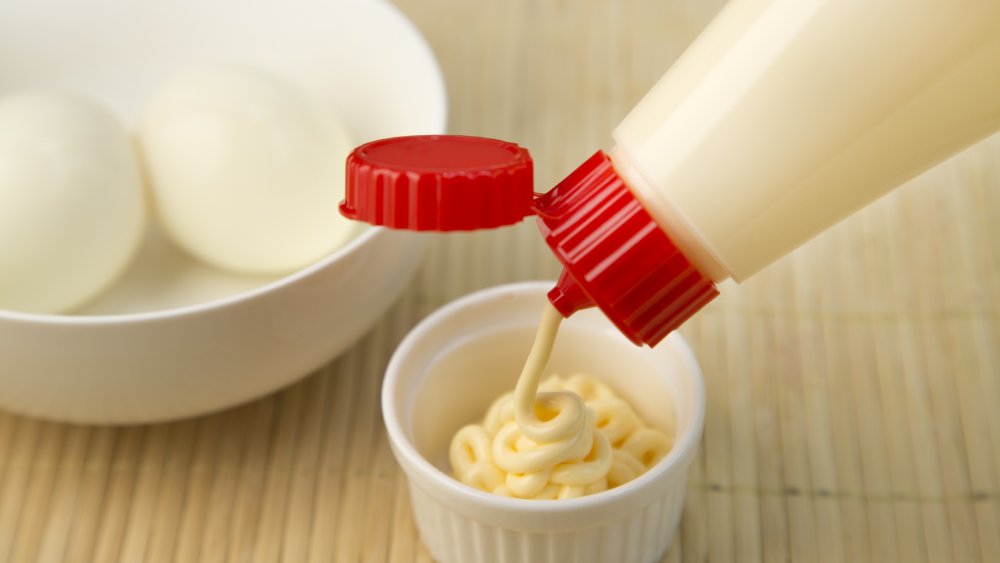The Real Difference Between Japanese Mayonnaise And American Mayonnaise
For much of its history, mayonnaise has been a highly contested condiment (via Slate). From its true origin to how it tastes, mayonnaise makes people feel a very certain type of way. Although mayo can be found in things like sandwiches, sauces, and salads, the debate on mayonnaise gets a little deeper as people compare American-made mayo to its overseas cousin in Japan. Japanese mayo, which is sometimes known by Kewpie (a globally recognized brand), is regarded as the global standard of what all mayonnaise should aspire to, according to Thrillist.
The creation of Japanese mayo can be traced back to the creator of the Kewpie mayonnaise company back in 1924. It is said that Toichiro Nakashima visited the United States and encountered mayonnaise there and brought back the recipe as a way to introduce a distinctive and enticing sauce accompaniment for veggies in Japan. Although Nakashima got his first taste of mayo in the US, Slate reports that both the French and the Spanish have made claims to its creation.
What makes Japanese mayo so different from American mayo?
The simplest place to start when establishing the differences between the two lies with their similar, yet divergent, ingredients. According to Pogogi, the recipe for American mayonnaise calls for soy-based vegetable oil, water, whole eggs, distilled vinegar, salt, and sugar. Although Japanese mayonnaise has some of the same ingredients, it's not entirely identical. Serious Eats details that the recipe calls for rice vinegar, malt vinegar, salt, MSG powder, Japanese mustard powder, dashi powder, garlic powder, egg yolks, and vegetable oil. Although Kewpie sells in the US, it is reported that it is made without the use of MSG powder.
Thrillist points out that because of the difference of ingredients, Japanese mayo tastes better than its American counterpart. Japanese mayonnaise is said to feel distinct as well. Just One Cookbook describes its texture as creamier, boosting a rich eggy flavor that is tangy and sweet. American mayo, on the other hand, is considered to be more fluffy and jelly-like with a more neutral taste in comparison. Another difference between the two is how both cultures use their choice of mayonnaise. While Americans love to use mayo in burgers, sandwiches, and salads, the Japanese use mayo on everything. Pogogi points out that in Japan you can find mayo in ice cream, snacks, spaghetti sauce, and even pancakes.

